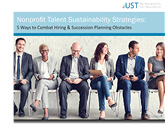Question: Which employers are required to maintain records of illnesses and injuries under the Occupational Safety and Health Administration’s (OSHA’s) recordkeeping and reporting regulations?
Answer: Employers that had more than ten employees at any time during the last calendar year are generally required to prepare and maintain records of serious occupational injuries and illnesses using the OSHA 300 Log. OSHA provides a partial exemption from the recordkeeping requirements for employers who had ten or fewer employees at all times during the previous calendar year and employers in certain low-hazard industries.
To determine if your company is required to prepare and maintain OSHA records, you will need to find your industry’s North American Industry Classification System (NAICS) code number using one of these methods:
Once you have identified your industry’s NAICS code, you can use the Partially Exempt Industries Table to determine if your industry is exempt from the recordkeeping rule.
Important: States with OSHA-approved plans may require employers to keep records for the state, even if employers are within an industry that is exempted from doing so under OSHA regulations.
Unless your facility is municipal, state, or federally-owned, it is subject to OSHA regulations as long as it has employees. Having non-profit status or a small number of employees does not exempt a business from OSHA compliance
Q&A provided by ThinkHR, powering the UST HR Workplace for nonprofit HR teams. Have HR questions? Sign your nonprofit up for a free 30-day trial here.

The Unemployment Services Trust has added a new eBook to its library, aimed at helping nonprofit organizations to more effectively find, develop and retain the right kind of talent.
SANTA BARBARA, Calif. (September 28, 2017) – The Unemployment Services Trust (UST) reveals some of the most common courses of action to take in order to help sustain employee talent that’s a best-fit for organizational values, culture and mission. This short eBook provides ideal tactics nonprofits can utilize when approaching reoccurring struggles with recruiting and retaining personnel.
As a nonprofit organization, having the right team is critical to your mission. Without the guidance of strong and steady leadership or the driving force of sufficient organizational support, nonprofits are left vulnerable to financial, strategic and geopolitical uncertainties.
The eBook, “Nonprofit Talent Sustainability Strategies: 5 Ways to Combat Hiring & Succession Planning Obstacles,” reveals that “77% of nonprofit organizations across the country have no leadership transition or a succession plan.” Such lack of preparation can lead to staff burnout, unfinished projects, lost deadlines, and unrealized mission goals.
“The competition for talent is at an all-time high, making it essential that your organization understands how to leverage the benefits you have to offer,” explains Donna Groh, Executive Director. “This eBook provides the insight organizations need to best prepare for inevitable staffing departures while persuading stellar job candidates to come onboard—helping them save valuable time and money.”
Utilizing recent survey data and nonprofit employment trends, UST is able to provide nonprofits with the top five ways to combat hiring and succession planning obstacles.
The eBook, now available for free download, also highlights:
You can download your complimentary copy today at: http://www2.chooseust.org/2017/eBook

Unexpected resignations can present big challenges for any business but especially for nonprofits with an already limited sta ff. Image the shock slowly turning into disappointment, anger and dread. Abrupt departures can be an emotional blow to the psyche, especially if it is someone who has positively contributed to the company. Now what?
Once you’ve processed the emotional aspects of losing a star employee, you’re then faced with the challenge of making sure things run smoothly through the transition. The following steps can help you effectively manage your staff during an unexpected staff departure:
When an employee resigns it creates uncertainty which creates stress. While losing some of your best people is inevitable, it doesn’t have to wreak havoc on the entire infrastructure. Managers set the tone for what happens next and with clear communication and mindful delegation; you can ensure an unexpected departure doesn’t turn your business structure upside down.

But falling behind can mean you miss valuable ways to help meet the needs of those you serve.
In fact, our guess would be that everyone at your organization probably agrees that staying up-to-date is important for the continued success of your agency. But how do you manage the flow of information while still being waist-deep in meeting the ever-growing needs of your nonprofit community?
Bridgestar suggests starting a professional reading group. A suggestion UST’s whole Division of Nonprofit Research heartily agrees with.
But, simply starting a professional reading group doesn’t guarantee its success. And, if you’re not sure of the reaction that managers and front line staff will have to a reading group that requires them to read and digest more information than they already are, start with small steps.
If these steps show promise and you’re getting a good response from enough people, suggest to your employees that a reading group should be formed to help your nonprofit stay on top of new developments and innovations.
If scheduling is an issue and causes your employees (or volunteers) to balk, offer several different reading group times that allow employees with different schedules to still meet with each other once a quarter or more often if there is time. Or try pre-recording group input and making it available online. This is the time to be creative in getting people on board and involved because the more your employees invest, the more they’ll be able to tout the strengths of the reading group to employees who haven’t joined yet.
Bridgestar suggests that when you finally start your professional reading group you:
Talent plays a critical role in the overall performance of a nonprofit. However, according to the 2016 Nonprofit Employment Practices Survey, 84 percent of nonprofits don’t have a formal retention strategy in place and the turnover rate has gradually increased over the past few years. Behind all this data, there is a noticeable pattern across these nonprofit organizations of why this is happening—limited budgets.
Allocating a portion of your operating budget to invest in talent will ensure that your organization has an engaged team to guide your mission in the right direction. To achieve true sustainability for your organization, you must compensate your talent appropriately and commit both time and resources to strengthening your culture.
Fortunately, there are many ways to foster a healthy and effective workforce that won’t have a direct impact on your budget. Besides compensation, there are other important factors that drive employee satisfaction—culture, values, organizational leadership, work-life-balance and career opportunities. Here are several cost-effective solutions to use when finding talent regardless of budget constraints:
1) Define Your Culture- Regardless of your nonprofit’s budget, you can have a strong organizational culture and, in turn, will encourage advancement of your mission. The most effective nonprofits tend to have employees that have the highest level of culture satisfaction. In order to have a positive corporate culture, nonprofits should apply the following components:
2) Implement Diversity Initiatives- According to a recent Glassdoor survey, 67 percent of jobseekers indicated that a diverse workforce is an important factor when considering a new employer. While diversity has an impact on recruiting, it also plays a significant role in organizational performance. According to McKinsey & Company, diverse companies are 35 percent more likely to outperform less diverse companies.
3) Incorporate New Management and Feedback Processes- While an overhaul to your approach on performance management can be costly and time consuming; you can now make incremental improvements even with a tight budget, and see major results. Improvements may include switching to quarterly reviews, encouraging employee feedback and evaluate current performance management tools.
4) Encourage Self-Care and Work Life Balance- Actively promote self-care and let your team know that even in times of budget restraints, you value their well-being. Educate your team members regularly on how they can incorporate better wellness practices into their daily routines.
Question: Are there tax or IRS implications if we give our employees a gift certificate or gift card instead of a cash bonus?
Answer: According to the IRS, cash or “cash equivalents” (such as gift cards) are always taxable. However, you can exclude the value of a de minimis (minor) benefit you provide to an employee. If you offer the employee a different type of recognition reward (such as a dinner out or tickets to an event), it may not be taxable. While the IRS doesn’t specifically put a dollar value on what constitutes “de minimis,” it is defined as “any property or service you provide to an employee that has so little value (taking into account how frequently you provide similar benefits to your employees) that accounting for it would be unreasonable or administratively impracticable. Cash and cash equivalent fringe benefits (for example, use of gift card, charge card, or credit card), no matter how little, are never excludable as a de minimis benefit, except for occasional meal money or transportation fare.”
For more information, the 2017 IRS Publication 15-B Employer’s Tax Guide to Fringe Benefits offers a chart that shows the tax excludable value of some fringe benefits.
Q&A provided by ThinkHR, powering the UST HR Workplace for nonprofit HR teams. Have HR questions? Sign your nonprofit up for a free 30-day trial here.
For nonprofits, employees’ collaborative efforts are often the key element to mission advancement But clashing personalities working toward the same goal can lead to resentment and impatience in the work place.
Learning to recognize and understand others’ personality strengths and weaknesses can help you appreciate the diverse environment you work in Specifically, nonprofits can take advantage of their diversity when it comes to improving their employment procedures and ensuring ongoing structural soundness.
Basic working styles can often be separated into 4 broad categories:
Whichever working style team members possess doesn’t really matter by itself What most affects a nonprofit’s success is the compilation of strengths your team brings to the table and your team’s ability to successfully work together as a cohesive unit. As long as you understand and utilize everyone’s unique abilities, pertinent to your team’s progress, your nonprofit will continue to flourish.
Discover which working style you have here.
Question: Can we provide summary plan descriptions (SPDs) electronically?
Answer: Yes. However, just sending them is not enough to meet ERISA requirements; you must ensure the intended recipients are actually getting them.
Specifically, ERISA requires SPDs to be furnished using “measures reasonably calculated to ensure actual receipt of the material” via “methods likely to result in full distribution.” Electronic delivery is one way to meet this requirement.
Any electronically delivered documents must be “prepared and furnished in a manner consistent with applicable style, format, and content requirements.” Therefore, it is a good idea to test the electronic document and make sure formatting and style are correct.
Unlike first class mail or hand-delivery options, electronic delivery does not work the same for all recipients. Instead compliance differs depending on whether the recipients:
Both groups of recipients must be notified of their rights to receive paper copies of the documents (at no charge), and reasonable and appropriate steps must be taken to safeguard confidentiality of personal information related to accounts and benefits. A best practice is for employers to ensure return-receipt or notice of undelivered mail features are enabled. Employers may conduct periodic reviews or surveys to confirm receipt as well.
Just emailing the documents or posting them on the company’s intranet or benefit administration portal is not enough. Each time an electronic document is furnished, a notice (electronic or paper) must be provided to each recipient describing the significance of the document.
Q&A provided by ThinkHR, powering the UST HR Workplace for nonprofit HR teams. Have HR questions? Sign your nonprofit up for a free 30-day trial here.

While the recipients may now face state and/or federal criminal fraud charges in addition to their previous charges, the overpayments in Missouri are simply a small indication of the larger, systematic overpayments—more than $13.7 billion this year!—that are a regular occurrence across the country.
Unfortunately there is little that can be done to force those who have maliciously collected improper payments to repay their debt, which has further weakened the already unstable UI system. And, as is to be expected in an employer funded tax pool that has already been maxed out in many states, the overpayments—whether intentionally improper or not—have strained the ability of businesses to further develop, which has prevented necessary workforce expansions. And ultimately continues to hurt the economic recovery.
Although unemployment benefits only provide a portion of a jobless workers former wages (when properly collected), the benefit funds allow those still looking for work to continue supporting themselves by paying for basic household and living expenses, which has allowed nonprofits that serve those hardest hit by the financial depression to reach a greater portion of the population most dependent on their services for basic living needs.
According to the Congressional Budget Office though, more than $250 billion have been spent on unemployment benefits in the last five years, with more than two million jobless workers currently receiving expanded UI benefits from the Federal Government, which totaled $94 billion in the last fiscal year alone.
For nonprofits still paying into the state’s pooled UI tax system, continued overpayments and the high cost of paying for the unemployment trends at other, larger companies, further creates a drain on much needed monetary resources that could be better directed back toward their founding mission.
To learn more about how your nonprofit can opt out of the state’s UI tax system and reduce unemployment costs request a quote today.

UST maintains a secure site. This means that information we obtain from you in the process of enrolling is protected and cannot be viewed by others. Information about your agency is provided to our various service providers once you enroll in UST for the purpose of providing you with the best possible service. Your information will never be sold or rented to other entities that are not affiliated with UST. Agencies that are actively enrolled in UST are listed for review by other agencies, UST’s sponsors and potential participants, but no information specific to your agency can be reviewed by anyone not affiliated with UST and not otherwise engaged in providing services to you except as required by law or valid legal process.
Your use of this site and the provision of basic information constitute your consent for UST to use the information supplied.
UST may collect generic information about overall website traffic, and use other analytical information and tools to help us improve our website and provide the best possible information and service. As you browse UST’s website, cookies may also be placed on your computer so that we can better understand what information our visitors are most interested in, and to help direct you to other relevant information. These cookies do not collect personal information such as your name, email, postal address or phone number. To opt out of some of these cookies, click here. If you are a Twitter user, and prefer not to have Twitter ad content tailored to you, learn more here.
Further, our website may contain links to other sites. Anytime you connect to another website, their respective privacy policy will apply and UST is not responsible for the privacy practices of others.
This Privacy Policy and the Terms of Use for our site is subject to change.
UST maintains a secure site. This means that information we obtain from you in the process of enrolling is protected and cannot be viewed by others. Information about your agency is provided to our various service providers once you enroll in UST for the purpose of providing you with the best possible service. Your information will never be sold or rented to other entities that are not affiliated with UST. Agencies that are actively enrolled in UST are listed for review by other agencies, UST’s sponsors and potential participants, but no information specific to your agency can be reviewed by anyone not affiliated with UST and not otherwise engaged in providing services to you except as required by law or valid legal process.
Your use of this site and the provision of basic information constitute your consent for UST to use the information supplied.
UST may collect generic information about overall website traffic, and use other analytical information and tools to help us improve our website and provide the best possible information and service. As you browse UST’s website, cookies may also be placed on your computer so that we can better understand what information our visitors are most interested in, and to help direct you to other relevant information. These cookies do not collect personal information such as your name, email, postal address or phone number. To opt out of some of these cookies, click here. If you are a Twitter user, and prefer not to have Twitter ad content tailored to you, learn more here.
Further, our website may contain links to other sites. Anytime you connect to another website, their respective privacy policy will apply and UST is not responsible for the privacy practices of others.
This Privacy Policy and the Terms of Use for our site is subject to change.
For you, answering these questions is critical to creating an invested workforce that sparks the creativity and drive that your mission thrives on. Answering the questions also gives employees a sense of who they are and where they fit in your agency, which leads to more productive, and innovative, workdays.
Answering these questions is only part of a strong employee retention policy though. What other steps do you take to keep employees engaged and excited about your nonprofit?
Read the original Ragan article here.